The gender pay gap: Why construction, real estate and manufacturing are lagging behind
May 19, 2025
The numbers are out – and the gender pay gap in Australia is still wide.
According to the Workplace Gender Equality Agency’s (WGEA) latest report, women earn just 78 cents for every dollar earned by men.
In construction, real estate and manufacturing? The gap is even wider.
At WIN, we see this as a chance to do better. To build fairer and stronger businesses in a sector that has the power to champion equality.
Here’s what needs to change.
The numbers behind the gap
According to WGEA’s latest report, Australia’s gender pay gap now sits at 21.8% – meaning women, on average, earn $28,425 less than men each year.
That’s a slight increase from last year’s 21.1% gap, largely due to the inclusion of CEOs and executives in this year’s data for the first time.
But the trend is heading in the right direction – with a 0.6% improvement on last year when comparing equivalent roles. So, there’s progress – but it’s slow.
And in industrial sectors, it’s even slower:
- Construction: 25.3% gap
- Real estate: 21.2% gap
- Manufacturing: 14.2% gap
These are among the highest gender pay gaps in Australia.
One key driver? Industrial remains heavily male-dominated, especially in senior roles.
The WGEA data shows men are almost twice as likely to be in the top pay quartile, while women are overrepresented in the bottom.
But change is possible, and we know many businesses are already leading the way.
What progress looks like in practice
In recent years, we’ve seen a genuine shift across parts of the industrial sector.
There’s growing awareness that equity isn’t just about salary, but total remuneration. At WIN, we’re pleased that a number of our partners are setting a new standard:
- Cushman & Wakefield has appointed several women to top executive roles globally, including ANZ CEO Noral Wild. The company has also introduced flexible work policies, inclusive hiring practices and regular pay equity reviews.
- Charter Hall is proactively addressing gender pay gaps through annual remuneration reviews and has women leading in key executive roles.
- CBRE is investing in programs to attract, retain and promote female talent at every level.
- Frasers Property has been named a WGEA Employer of Choice for Gender Equality and continues to build inclusive leadership into its culture.
- Dexus and ISPT have published gender equity strategies and aligned themselves with external benchmarks.
- Knight Frank and Greystar are driving cultural change through formal DEI policies and flexible work frameworks.
These are promising signs of progress, and momentum is building.
But for real change to happen, these examples must become the norm across our sector – not the exception.
Addressing barriers head-on
In many workplaces, women appear to be paid equally on paper. But when you look deeper – at bonuses, commissions, superannuation and leadership pathways – the picture changes.
So, what’s standing in the way of true pay parity?
Part of it stems from legacy mindsets – outdated assumptions about women’s availability, pressure tolerance or emotional resilience. These biases influence who gets offered roles or fast-tracked into senior leadership.
Then there’s the issue of recruitment and promotion.
Many organisations still favour candidates ticking every box. But this model inadvertently disadvantages women, who are statistically more likely to self-select out unless they meet all the criteria.
Often, the barriers are invisible: outdated pay systems, bias in performance reviews, and rigid work structures that penalise those with caregiving responsibilities.
So, how do we move forward?
The blueprint for change
If we’re serious about closing the gender pay gap in industrial, we need to rethink how we define work, leadership and equity.
Here’s how to start:
- Challenge mindsets: Let go of legacy assumptions about women’s capacity, availability or ambition.
- Fix pay systems: Review the distribution of bonuses, commissions, superannuation and parental leave. Close the gap in total remuneration, not just base salaries.
- Benchmark roles, not people: Base pay on the value of the role, not who negotiates hardest.
- Redesign leadership pathways: Prioritise women for roles in operations, finance, logistics and C-suite – not just in support functions.
- Back it with real support: Mentorship, sponsorship and strong peer networks are critical to helping women rise – and stay.
- Create space through quotas: Sometimes we need to shift the structure before the mindset follows. Quotas can help rebalance leadership – but real inclusion must follow.
- Shift ideology through education: Women don’t need to tick every box to be ready – and men need to recognise and acknowledge the systems working in their favour. Equity begins with awareness.
- Partner with organisations like WIN: Engaging with industry networks that champion equity helps drive accountability and fast-track change.
The legacy we’re building
Change is happening. But without further intentional action, we risk embedding a new generation of inequality.
At WIN, we’re here to create an industry that’s not only more equitable, but more sustainable, innovative and resilient.
So, here’s our call to action:
Examine your structures, pay systems and leadership pipelines. Keep pushing for transparency, accountability and meaningful reform.
Above all, speak up. Step forward. And support one another.
The future of industrial is being built right now. Let’s ensure it works for everyone.
Want to help build a more equitable industrial sector? Follow WIN on LinkedIn to stay informed, share the message – and help bring others along.















